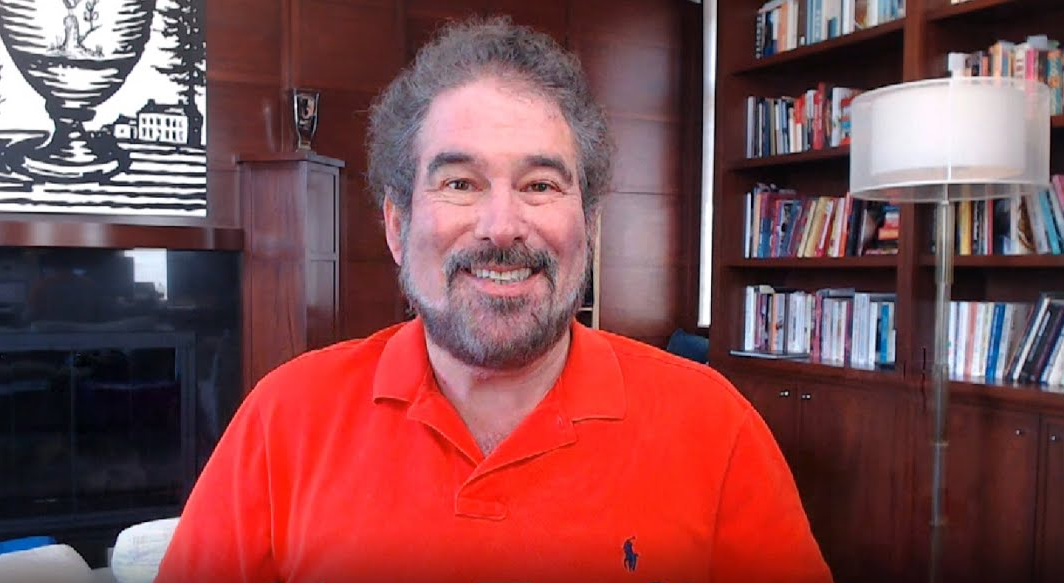 AI
AI
 AI
AI
 AI
AI
Most successful tech entrepreneurs build companies and careers on their brainpower. But the founder and chief executive officer of Pegasystems Inc. built his company into a billion-dollar success by also using his hands.
Alan Trefler (pictured) moved pieces around a chess board and won the World Open Chess Championship in 1975 at the age of 19. He spent years hunched over a keyboard learning how to code, majoring in computer science at Dartmouth College. And when he was just launching his software company in the early 1980s, he landed Bank of America as an early major customer after fixing a shattered family heirloom for a distraught employee during a sales call.
What Trefler learned along the way was the importance of adapting to whatever situation life brings. The business world, like chess, is about thinking several moves ahead, having the courage to try new approaches, and ultimately coming out in front.
“From the inception, we’ve always been a scrappy company,” Trefler said. “Part of why we’ve been able to reinvent our technology literally five times over the years is that we’re always prepared to look from a new angle and apply that entrepreneurial thinking and scrappiness.”
Trefler spoke with Dave Vellante, chief analyst at SiliconANGLE Media’s sister market research firm Wikibon and co-host of SiliconANGLE Media’s video studio theCUBE. They discussed Pegasystems’ automation solutions, how customers use its products to help people in need, the state of robotic process automation and the future of business in a post-COVID-19 world.
Pegasystems is now entering its fifth decade as a provider of software tools for customer engagement. The company has been refining its portfolio over the years to include artificial intelligence solutions for improving the customer engagement experience.
An example of this can be seen in a new AI-based tool launched in October. The company introduced Next-Best-Action-Designer for AI as a way for users to design customer experiences based on defining end goals and letting the tool choose best practices.
“You need to think about your business from the center out,” Trefler explained. “How do I apply AI to what I want to do for and with my clients? How do I apply workflow and work management capability to ensure that those decisions are done optimally and effectively? That’s what Pegasystems has worked on since our inception.”
Pegasystems made a move around 2010 to bring machine learning and decisioning into its work management platform, according to Trefler. The company’s shift has paid off handsomely, particularly in the financial services space. Its software is now used by seven of the top 10 global banks and 14 of the top 15 financial institutions in North America.
Yet the company has also paid particular attention to empathy in the use of AI. In July, Pegasystems issued a report that found that 35% of over 6,000 respondents were concerned that machines would take their jobs.
Trefler cited one customer — Commonwealth Bank of Australia — that leveraged his company’s AI-infused customer engagement engine to connect with people impacted by devastating wildfires that ravaged the country last year.
“They sent personalized messages and relief to people whose homes were burned out because they wouldn’t be able to pay their credit card bills,” Trefler said. “People didn’t have to call the contact center. Now with the COVID epidemic, that organization is doing the same types of things, which really endears them with their customers but also gets tied into that efficiency layer.”
Pegasystems’ use of AI to improve efficiency has been driven by its investment in robotic process automation. The firm has carved out its own position in the space and was named to Constellation Research’s shortlist for RPA last year.
However, the RPA field has endured adversity of late. In October, UiPath Inc. laid off 400 employees. And late last month Automation Anywhere Inc. announced a 10% cut in staff.
How has Pegasystems managed to avoid the fallout from a pullback in RPA?
“A lot of these RPA vendors are running around saying, ‘All you need is the tail,’” Trefler said. “You really need an engine driven by AI and driven by process automation — that has to be at the heart. That’s the dog to the RPA tail.”
Late last month, Pegasystems announced that its first quarter revenue increased 25%, driven by a nearly 60% rise in earnings for Pega Cloud. The company offers a fully managed cloud to provide enterprise customers with tools and operational support. It now accounts for more than half of Pegasystems’ business, according to Trefler.
As for the current, highly challenging business climate, the company’s founder believes that the chess board will ultimately line up in his favor.
“Those awesome customers, some of whom are suffering, are going to come back. And they’re going to increasingly need to change their digital infrastructure,” Trefler said. “Their digital transformation is going to benefit from platforms like ours in unique ways.”
Here’s the complete video interview, one of many CUBE Conversations from SiliconANGLE and theCUBE:
THANK YOU